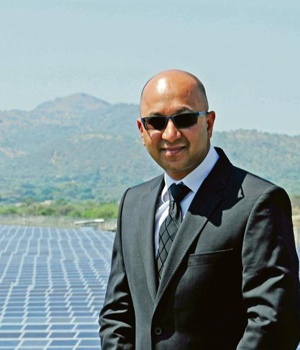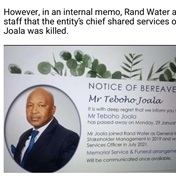
There are no telltale smoke stacks or coal dumps at this new power plant, which is tucked behind bushes and mine shafts outside Rustenburg in North West.
From atop a mine dump, one can see 144 neatly structured rows of tilted frames holding 29 808 solar photovoltaic panels that convert sunlight into enough electricity to supply an average-sized township.
This is the RustMo1 Solar Farm – a photovoltaic power-generation plant developed by Momentous Energy with the help of a R108 million investment from the Industrial Development Corporation (IDC).
Built on a 19-hectare farm along the N4 next to a disused platinum mine processing plant in Marikana, the power plant generates seven megawatts of power for the Eskom grid.
Momentous director Pravin Semnarayan said this was enough to supply more than 2 000 households.
For Semnarayan – a professional engineer with a master’s degree in chemical engineering and an MBA, as well as work experience as an operations executive for a casino group – this plant is the way of the future.
“The amount of energy from the sun that falls on the planet every hour could provide the entire world with power for one year.
“Here we use sunlight, not heat, and the sunlight falls on panels and gets inverted into a direct current,” he said.
“There is hope in solar energy and this form of renewable energy is less complicated. Free energy from the sun is abandoned and not being put to good use.”
Construction of the RustMo1 plant – which Semnarayan said was “just the beginning” of operations – began late in 2012 on a piece of land bought from a private owner.
The 29 808 solar panel modules are connected to 11 inverters and six mini-transformers that generate power in a noise-free environment.
They may look like ordinary solar panels, but a renewable energy power plant this size does not come cheaply.
Semnarayan said RustMo1 was built at a cost of R240 million, with the IDC contributing 45% of this amount.
“The IDC made a major capital investment in the form of debt and equity and also ensured local community ownership by making sure that 17% of the project was owned by locals. The funding from the IDC was used for procurement and the actual construction of the plant.
“The IDC was there to assist us from the beginning to the end of the project to ensure its successful construction, and today we have been operational for more than two years. We have a 30-year supply contract with Eskom.”
Semnarayan said although more jobs had been created during the plant’s construction phase, they now employed 30 full-time staff who lived in the surrounding areas.
One of them is Asanda Marawana. She works as a security controller and this is her first formal job after she completed matric in 2006.
Marawana dreams of becoming a human resources practitioner one day. She is studying towards an HR certificate through Unisa.
“I started here as a security guard and my life has turned around since then. I am even able to send my nine-year-old to a private school,” she said.
“More than anything, I am proud to be part of this. I have seen small solar panels used to power television sets, but I never thought that energy could be magnified and generate enough power to supply a whole village.”
A few years ago, Marawana’s colleague, Dimakatso Chunda, was one of many young South Africans who had given up hope of finding a decent job.
“I completed matric in 2002 and helped my father in his small cash-loan business. This is my first formal job and I see myself growing here,” said Chunda, who also works in the security control room.
“My husband is unemployed, but I am managing to take care of our family, including our 14-year-old child, on my salary.
“I am also paying for my correspondence fees for a qualification in occupational health and safety, which is relevant here at RustMo1.”
Semnarayan said they were working to expand the plant.
“This renewable energy source generates 35 000 to 40 000 kilowatt hours of energy daily. An average family household uses about 600kWh per month,” he added.
“Solar photovoltaic panels contain material that converts solar radiation directly into electricity. Although it is expensive to establish, solar energy plants need nothing to run except the sun. And the sun will keep shining until the world’s end,” added Semnarayan.




 Publications
Publications
 Partners
Partners








